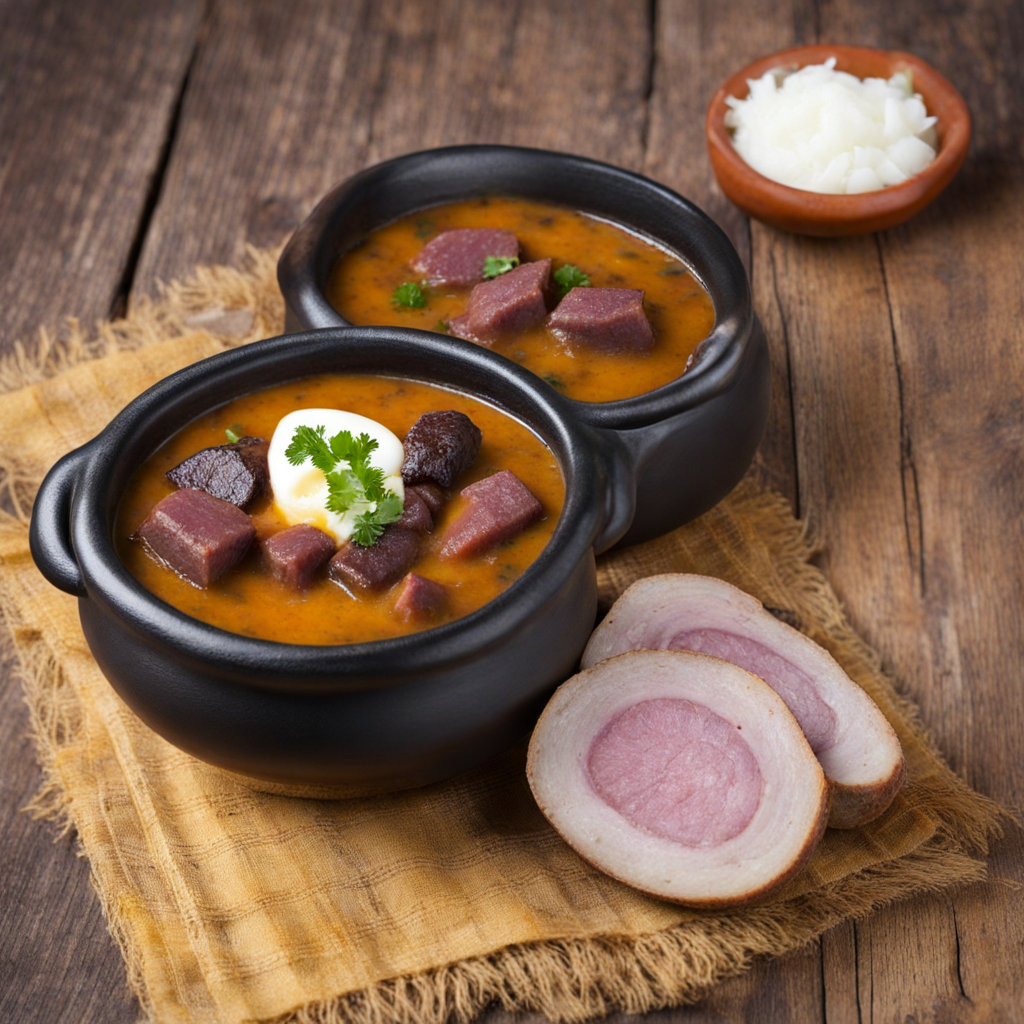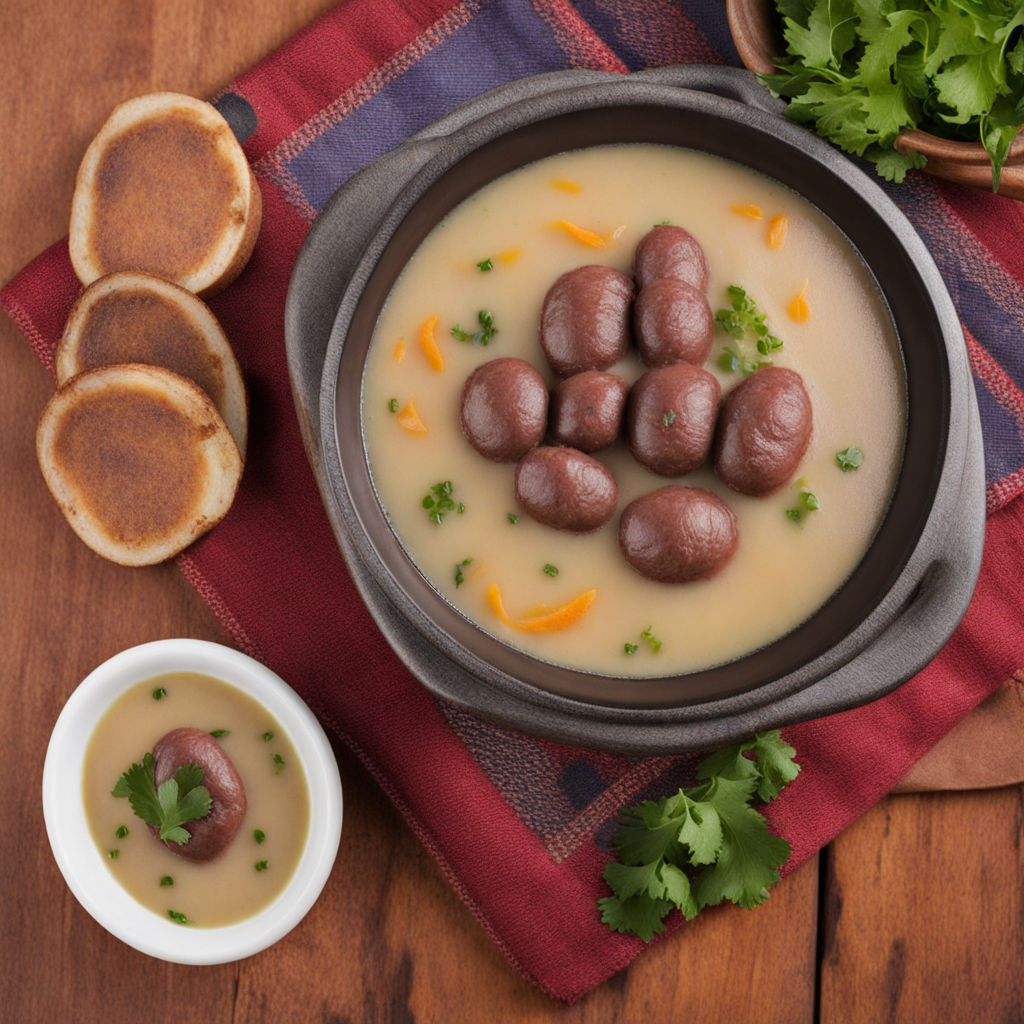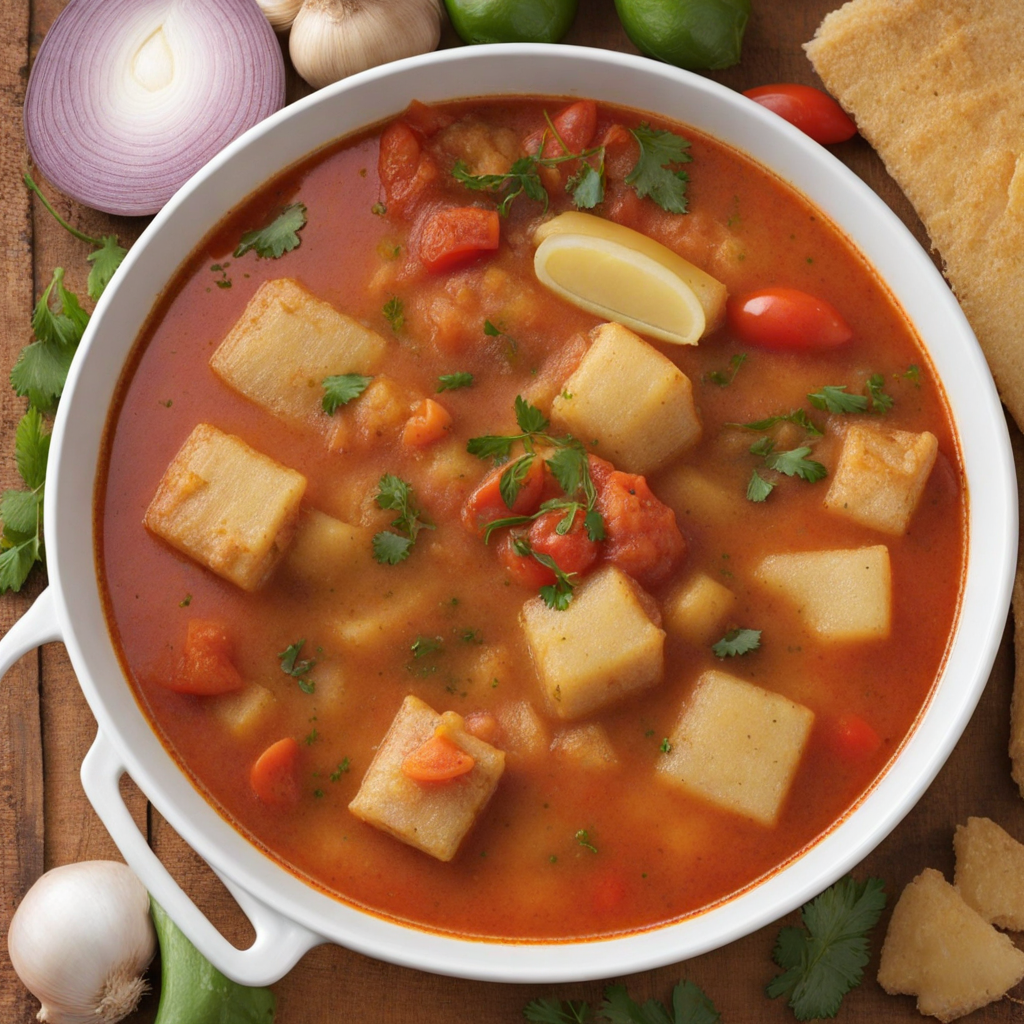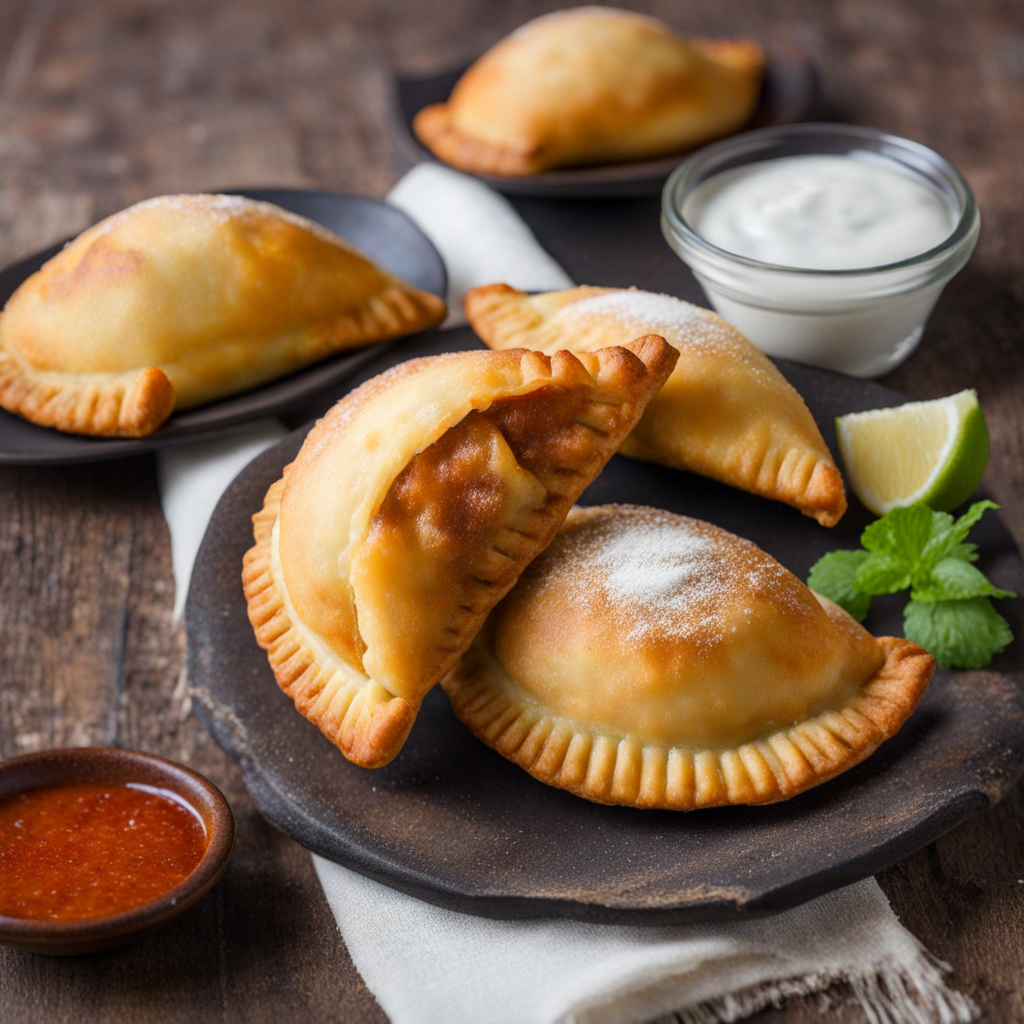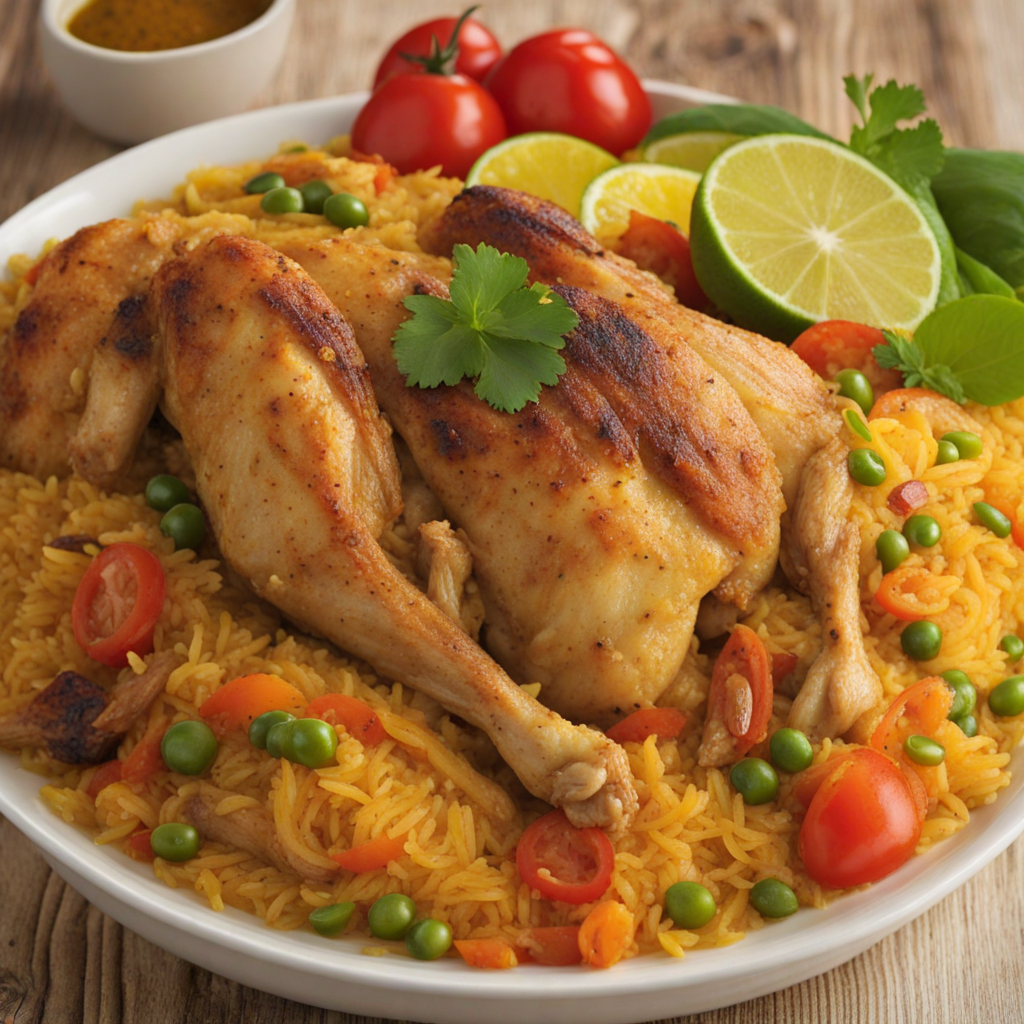Yahuarlocro
Yahuarlocro is a traditional Ecuadorian dish that tantalizes the taste buds with its rich flavors and unique ingredients. This hearty soup is primarily made with lamb or goat meat, which is slow-cooked to achieve a tender and succulent texture. The meat is typically combined with a variety of local spices, including cumin, garlic, and a hint of chili, creating a deeply aromatic base that warms the soul. The star of the dish is the addition of fresh herbs, such as cilantro and parsley, which not only enhance the flavor but also add a vibrant green hue to the dish, making it visually appealing. What sets Yahuarlocro apart is its inclusion of key ingredients such as barley and potatoes, which help to thicken the soup and provide a comforting, hearty element. The barley adds a nutty flavor, while the potatoes contribute a creamy texture that balances the dish. As you dive into a bowl of Yahuarlocro, you’ll experience a delightful medley of tastes and textures that celebrate the essence of Ecuadorian cuisine. Each spoonful offers a satisfying warmth, perfect for any occasion, particularly during cooler months or after a long day. Often served with a side of avocado or a sprinkle of lime, Yahuarlocro is not just a meal but an experience that connects you to the rich culinary traditions of Ecuador. The combination of savory meat, wholesome grains, and fresh herbs creates a harmony of flavors that is both comforting and invigorating. Whether enjoyed at a local eatery or prepared at home, this dish invites you to explore the depths of Ecuadorian gastronomy and discover a taste that is both unique and unforgettable.
How It Became This Dish
Yahuarlocro: The Heart of Ecuadorian Culinary Tradition Yahuarlocro is a dish steeped in history and rich in cultural significance, hailing from the highlands of Ecuador. This traditional Ecuadorian soup, primarily made from lamb or goat and served with rice and potatoes, is emblematic of Andean culinary practices and reflects the region's agricultural bounty and social customs. Its name, derived from the Quechua words "yahuarl" (blood) and "locro" (soup or stew), encapsulates the very essence of the dish and its connection to ancestral practices. Origins of Yahuarlocro The roots of Yahuarlocro can be traced back to pre-Columbian times, when indigenous communities in the Andes cultivated a deep relationship with their environment. The high-altitude regions of Ecuador, characterized by their diverse climates and ecosystems, provided a variety of ingredients crucial to the survival and nutrition of these communities. Livestock, particularly sheep and goats, were integral to the Andean way of life, providing meat, milk, and wool. Historically, the preparation of Yahuarlocro was not just a culinary endeavor but a communal event. It was often prepared during significant life events, such as festivals, communal gatherings, and rites of passage, where the sharing of food symbolized unity, hospitality, and the continuity of cultural traditions. The use of blood in the dish is particularly noteworthy, as it reflects ancient Andean beliefs surrounding life, death, and the interconnectedness of existence. Blood was viewed not merely as an ingredient but as a powerful symbol of vitality and sacrifice, integral to the life cycle of both animals and humans. Cultural Significance Yahuarlocro holds a special place in Ecuadorian culture, especially among the indigenous populations of the highlands. The preparation and consumption of this dish are often imbued with ritualistic significance. For many communities, it is a way to honor the animals that provide sustenance and to express gratitude for the land’s bounty. The dish is often served during significant cultural events and holidays, such as Inti Raymi (the Festival of the Sun) or during festivals dedicated to local patron saints. Moreover, Yahuarlocro serves as a culinary symbol of regional identity. Each province in Ecuador has its own interpretation of the dish, incorporating local spices, herbs, and cooking techniques. For instance, in the province of Azuay, the dish may include additional ingredients like corn and avocados, while the version from Cañar may feature distinct herbs and spices that reflect the local terroir. This regional variation not only showcases the diverse agricultural practices of the country but also highlights the unique cultural identities within Ecuador. Ingredients and Preparation Traditionally, Yahuarlocro is made from fresh lamb or goat, which is simmered with potatoes, rice, and a blend of Andean herbs and spices. The use of blood is a defining characteristic of the dish; it is typically collected during the slaughter of the animal and added to the soup, giving it a rich, deep flavor and a distinct, dark color. The blood is often mixed with other ingredients to create a cohesive dish that is both hearty and nutrient-dense. The preparation of Yahuarlocro is a labor-intensive process, often involving several steps that include cleaning, seasoning, and simmering the meat until tender. The soup is usually accompanied by sides such as avocado, plantains, or aji (a type of hot sauce), which provide additional layers of flavor and texture. The communal aspect of the dish is further emphasized during meals, as families and friends gather around the table to share the warm, nourishing soup. Development Over Time As Ecuadorian society evolved, so too did Yahuarlocro. The arrival of Spanish colonizers in the 16th century introduced new ingredients and cooking techniques, leading to the fusion of indigenous and European culinary traditions. This blending of cultures enriched the dish, allowing it to adapt to changing tastes and available resources while maintaining its original essence. In contemporary Ecuador, Yahuarlocro continues to be a beloved staple, though its presence has expanded beyond the confines of rural communities. Urbanization and globalization have introduced the dish to a wider audience, with restaurants in cities like Quito and Cuenca featuring Yahuarlocro on their menus. This shift has sparked a renewed interest in traditional Ecuadorian cuisine, prompting chefs to experiment with the dish while honoring its historical roots. Despite its modernization, Yahuarlocro remains a powerful symbol of Ecuadorian identity. It is not merely food; it represents a connection to the land, the ancestors, and the communal spirit that defines Andean culture. Culinary festivals and competitions often celebrate traditional dishes like Yahuarlocro, emphasizing the importance of preserving culinary heritage in an ever-changing world. Conclusion Yahuarlocro is more than just a dish; it is a vibrant tapestry woven with the threads of history, culture, and community. Its origins in the Andean highlands speak to the resilience and resourcefulness of indigenous peoples, while its evolution reflects the dynamic nature of Ecuadorian society. Today, as Ecuadorians and visitors alike savor the rich flavors of Yahuarlocro, they partake not only in a meal but in a shared legacy that transcends generations. In a world where culinary traditions are often overshadowed by globalization, Yahuarlocro stands as a testament to the enduring power of food as a means of connection, celebration, and identity. It invites us to appreciate the stories behind our meals and to honor the cultures that have shaped them. Through Yahuarlocro, we are reminded that food is not just sustenance; it is a bridge to the past, a celebration of the present, and a promise for the future.
You may like
Discover local flavors from Ecuador


